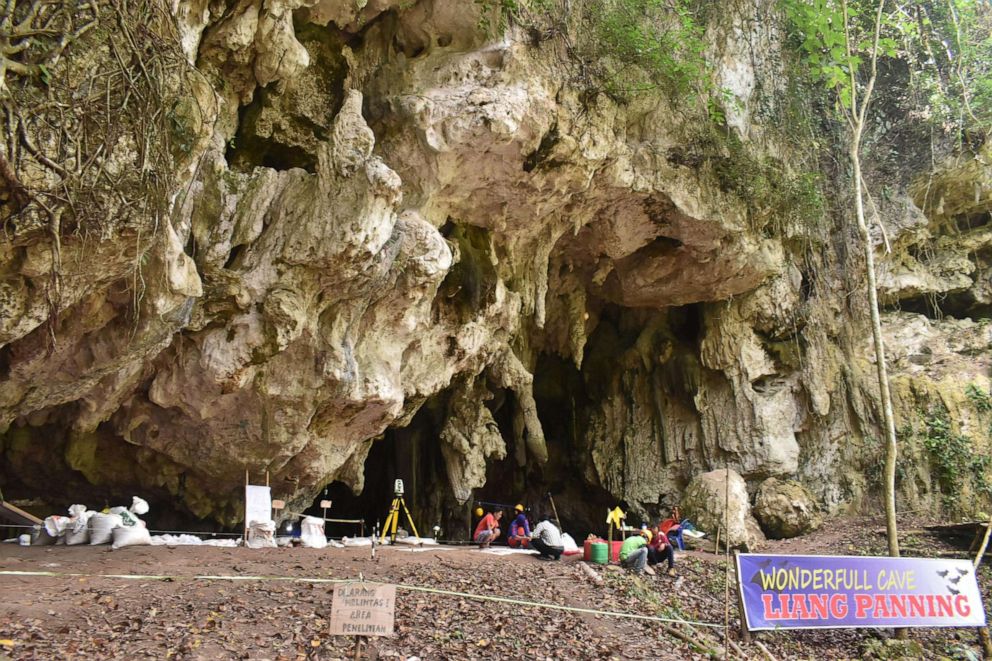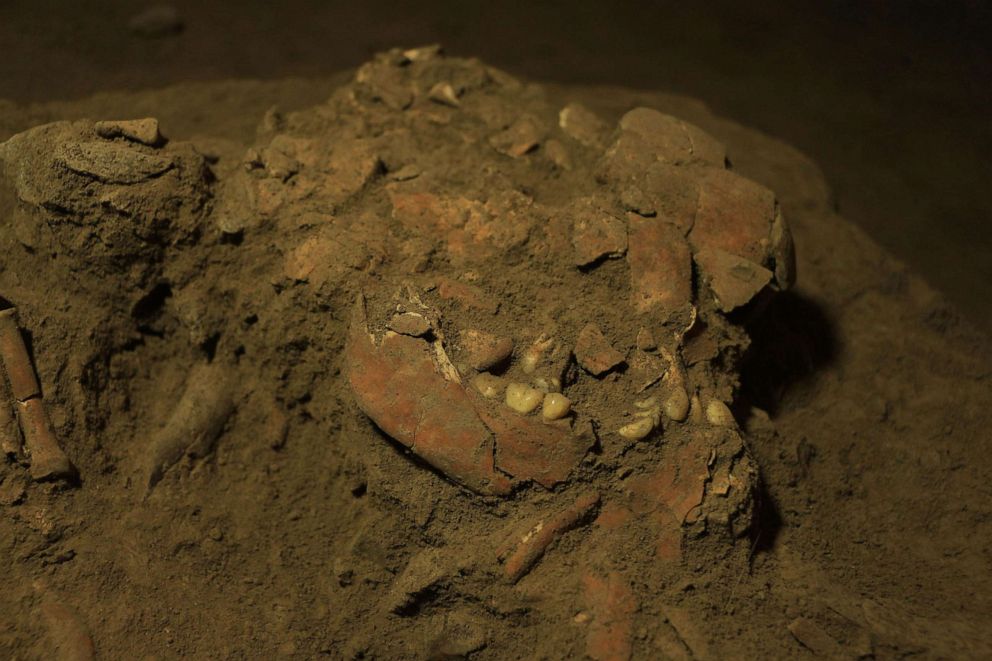Discovery of ancient human DNA in Southeast Asia 'exceptionally rare,' scientists say
Little is known about the population history of modern humans in Southeast Asia.
Scientists have made an "exciting" discovery of ancient human DNA that they say will allow them to piece together the mysterious ancestry of the people in Southeast Asia.
Little is known about the population history of modern humans in Southeast Asia because ancient DNA is easily degraded due to the tropical climate, according to a study published Wednesday in Nature.
In 2015, scientists excavated a partially preserved human skeleton in a limestone cave in Leang Panninge on the Indonesian island of Sulawesi, an "exceptionally rare" find in the area because the humid climate is unforgiving on the preservation of genetic material once the organism dies, Adam Brumm, a professor of archaeology at Griffith University in Brisbane, Australia, and one of the authors of the study, told ABC News.

Analysis of the DNA revealed that the body belonged to a young female hunter-gatherer, about 17 or 18 years old, during the pre-Neolithic era, according to the study. She shares half of her DNA with Aboriginal Australians and the other half with the people found in Papua New Guinea, Brumm said.
The woman had been interred in a fetal-like position in a shallow grave within a Toalean burial complex around 7,200 years ago, Brum said. She was found with large rocks placed over some parts of her body as well as around it, Brumm said. Artifacts such as "really sophisticated stone tools" such as chipped arrowheads were also found in the tomb -- perhaps as a grave offering, Brumm added.
It is the first ancient DNA found in Wallacea, a "massive" region of thousands of oceanic islands located between the continental landmasses of Asia and Australia, Brumm said. Modern humans crossed through Wallacea on their way to the Australian continent at least 50,000 years ago.

Scientists know "very little" about the movement of humans to the "gateway to Australia" because early human skeletal remains are rare in the region, Brumm said, adding that this "distinct culture" has "always been a bit of a mystery."
"So to find ancient DNA from the region is really important because, through genomic analyses, we can start to look at the genetic ancestry of humans in that area," he said. "We can start to look at population history. It just provides a lot more insight than we currently have."
The woman's DNA was part of a population group that is more closely related to modern-day Near Oceanian populations, which includes Australia and Polynesia, than East Asian groups, according to the study.
The researchers suggest that the woman may have a local ancestry that had been present in Sulawesi from the arrival of modern humans. However, it is unclear whether this population is responsible for the earliest evidence of humans in the region, Sulawesi cave art that is at least 45,500 years old.

When the pandemic becomes less of a deterrent, Brumm plans on continuing to excavate the region to search for more ancient human DNA, he said.
"We hope there are more ancient human DNA samples found in this part of the world, and maybe they'll provide more insight into who these people were, because currently we can't really see evidence for them in the archaeological record," he said.




